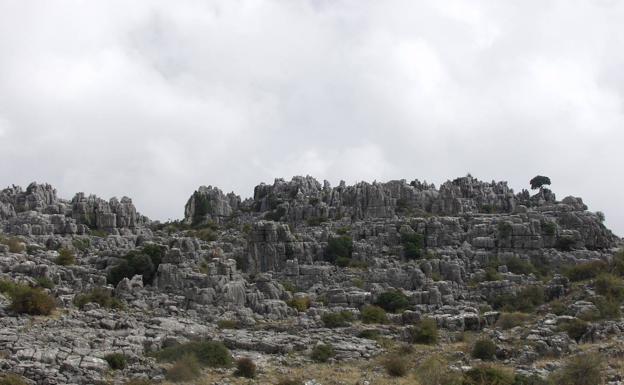A tour around Malaga’s eroded rock labyrinths
El Torcal de Antequera is not the only place in the province that is home to curious rock formations. It is also possible to see them in places such as El Valle de Abdalajis, Cartajima, Júzcar and Casares
Javier Almellones
Monday, 13 February 2023, 15:18
The geological diversity of the province of Malaga is one of the most attractive features of its landscape. And while it may be the most famous, El Torcal near Antequera is not the only place where one can enjoy the sight of these unique mazes of eroded rock.
Intricate karstic rock formations are spread over a good part of the province of Malaga, and some of the rocks have been sculpted by the force of the wind and rain in such a way that they end up resembling objects or animals. A tour can be taken around the westernmost part of the province of Malaga to see the other 'torcales' which can be explored on foot.
Without needing to wander far from Antequera one can discover the Sierra de Abdalajís, which forms part of a great stretch of limestone extending from the Axarquía to the Guadalhorce Valley. El Torcal del Charcón, which owes its name to a local farmhouse with the same name, can be discovered by starting out in the Valle de Abdalajís and following one of the hiking trails that go deep into the heart of its rocky mountains. On the walk along its steep slopes, you will also pass by other spots where some rather weird and wonderful sculptures have been naturally formed.
Between Cartajima and Júzcar in the Serranía de Ronda lies Los Riscos. In the last few years it has become a place of interest due to Las Eras - the only approved and permitted route on which to discover the rocky delights of the local geology. It is important to bear in mind that it runs through private property, meaning visitors should not stray from the circular route which allows them to enjoy the sights.
Many of these geological complexes are accessible and can even be explored on official hiking trails
The local terrain is home to some notable rock formations, among them the Águila (eagle), officially listed as a Rincón Singular (a unique spot) by the Malaga provincial authority. As its name reveals, erosion has resulted in the rock bearing a striking resemblance to the well-known bird of prey.
In the municipality of Casares one can hike through El Canuto de la Sierra de la Utrera thanks to a well-known trail that goes all the way to the river Manilva, and descend into a canyon through an enclave whose rock formations are particularly surprising. This enclave is the southernmost karst in all of Europe.

El Torcal de Antequera is of course the province’s most important karst formations due to its size. Within it, one can find several hiking trails, a visitor centre, and even an observatory. Over the last few years, access has been restricted to certain vehicles due to the enormous influx of visitors. Be advised that once the parking area in Torcal Alto is full it is only possible to enter by taking a bus from car park on the road below.
It is advisable to stick to the authorised paths while exploring El Torcal de Antequera, particularly the green and yellow routes, which are both circular. Another notable path is the one that leads to El Tornillo, which is not only the symbol of this protected area but also recognised as a natural monument.
There are other paths that allow visitors to access other areas of El Torcal, such as the path that begins at the aforementioned lower parking area or one that begins in Villanueva de la Concepción. A third route, known as the Escaleruela, is located on the western edge of El Torcal and carves a diagonal path through the complex.

There are many more karsts in Malaga province, although not all are easy to access or explore. Others worth taking note of are Peñón del Berrueco and Torcal de las Motillas in Cortes de la Frontera, Llano de Líbar in Montejaque, and Navazuelo and Puerto de los Pilones in Sierra de las Nieves National Park.
